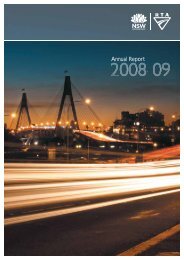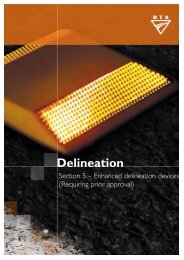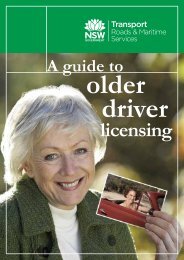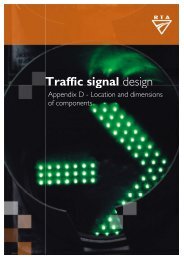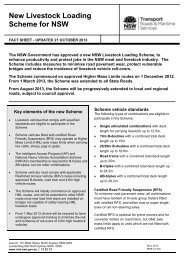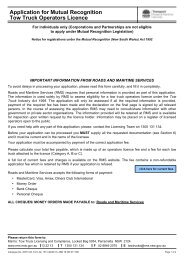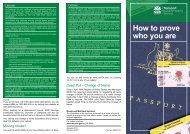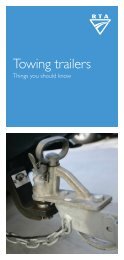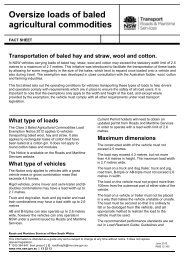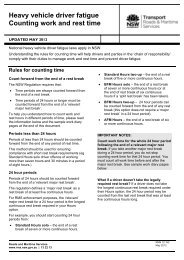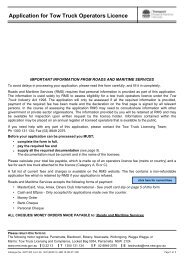Hazard perception handbook - RTA
Hazard perception handbook - RTA
Hazard perception handbook - RTA
You also want an ePaper? Increase the reach of your titles
YUMPU automatically turns print PDFs into web optimized ePapers that Google loves.
5<br />
50<br />
you may need less time to cross the intersection if your car is already moving. This<br />
may be the case when you are approaching a Give Way sign at an intersection and<br />
can proceed across without stopping. However, take care. It is difficult to judge your<br />
speed and that of other traffic from the left and right. If in doubt, stop and only<br />
cross the intersection when you are sure the gap is big enough.<br />
<strong>Hazard</strong> <strong>perception</strong> <strong>handbook</strong><br />
Where there is a median strip, you may be able to cross the intersection in<br />
two stages if the traffic is heavy. Select a safe gap to the right and move to<br />
the middle of the road protected by the median. When there is a safe gap<br />
from the left, complete the crossing.<br />
GUIdELINES, NOT RULES<br />
These are guidelines only, not hard and fast rules. you will need to build your gap<br />
selection skills so you know what a safe gap looks like to you when you are crossing<br />
an intersection.<br />
kEy POINTS SUMMARy:<br />
SAfE GAPS WHEN CROSSING INTERSECTIONS<br />
When crossing a typical intersection in a 60 km/h zone, you need gaps of at least<br />
the following:<br />
• Three seconds to the right (about 50 metres).<br />
• Four seconds to the left (about 70 metres).<br />
If a gap is not big enough, don’t go – you need to wait until it is safe.



